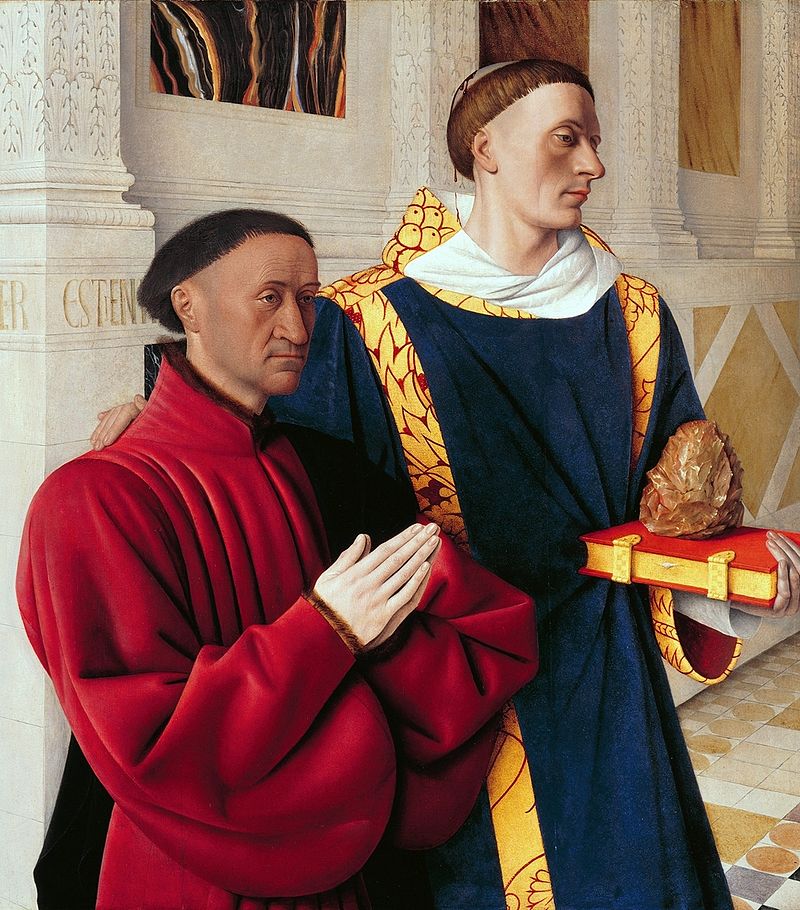The Melun Diptych, a masterpiece of the early French Renaissance, has long fascinated art historians and enthusiasts alike with its rich symbolism, striking colors, and the mysterious stories behind its creation. Painted by Jean Fouquet in the mid-15th century, this two-panel work of art combines religious themes with portraiture in a way that was groundbreaking for its time.
On one panel, the Madonna is depicted with an ethereal beauty, cradling the Christ child, while the other panel portrays Étienne Chevalier, the French treasurer who commissioned the work, alongside his patron saint, Stephen. The diptych’s blend of divine and earthly realms, along with its detailed imagery and emotional depth, invites viewers into a contemplation of both its visible beauty and hidden meanings. This article aims to shed light on the enigmatic elements of the Melun Diptych, revealing the historical context, artistic innovations, and the personal stories intertwined with its creation.
What is The Melun Diptych?
The Melun Diptych is a celebrated work of art from the Early Renaissance period, created by the French painter Jean Fouquet around 1452. This iconic piece is a diptych, meaning it consists of two panels hinged together, which was a common format for altarpieces and devotional paintings of the time. The left panel features a striking portrait of the Virgin Mary with the Christ Child, while the right panel shows Étienne Chevalier, the French treasurer who commissioned the artwork, kneeling beside his patron saint, Stephen.
Fouquet’s creation of the Melun Diptych was a result of both his innovative artistic vision and the cultural influences of his time. After traveling to Italy, Fouquet was inspired by the work of Italian masters, which is evident in the diptych’s use of perspective and the realistic portrayal of figures. However, he also infused the work with distinctive Northern European elements, such as intricate details and vibrant colors. The Virgin Mary is notably depicted with unusual beauty and serenity, her pale skin contrasted against a deep blue background, while Étienne Chevalier is rendered with meticulous attention to the textures of his garments and the surrounding architecture.
The process of creating the Melun Diptych involved careful planning and execution, using techniques that were advanced for the 15th century. Fouquet employed oil paint, a relatively new medium at the time, which allowed for greater richness of color and detail compared to the tempera paint commonly used in earlier periods. The panels were crafted from oak, providing a durable surface for the intricate layers of paint.
Beyond its technical achievements, the Melun Diptych is celebrated for its emotional depth and symbolic complexity. The Madonna’s enigmatic expression and the intimate portrayal of Étienne Chevalier reflect a personal dimension to the work, suggesting a deeper connection between the earthly patron and the divine figures.
The Secrets of The Melun Diptych
The Melun Diptych is not only a masterpiece of the Early Renaissance but also a work shrouded in intriguing secrets and hidden details that have fascinated scholars and art lovers for centuries. Here are some of the lesser-known aspects of this enigmatic diptych:
- Unconventional Madonna: The depiction of the Virgin Mary in the Melun Diptych is one of the most talked-about aspects due to its deviation from traditional representations. Mary is portrayed with a strikingly pale complexion and a royal blue robe, exuding an almost ethereal presence. This portrayal was groundbreaking and controversial, suggesting Fouquet’s bold departure from conventional religious iconography.
- The Identity of the Model: It has been speculated that the model for the Virgin Mary was Agnès Sorel, the mistress of King Charles VII of France, known for her beauty and influence at court. This theory adds a layer of scandal and intrigue, suggesting the intertwining of the sacred with the profane and highlighting the close ties between art, politics, and power in the 15th century.
- Symbolic Imagery: The diptych is rich in symbolic imagery, with each element carefully chosen to convey deeper meanings. For example, the Christ Child’s gesture of blessing is directed towards Étienne Chevalier, implying divine favor and protection. The choice of Saint Stephen as Chevalier’s patron saint, holding the rock of his martyrdom, further symbolizes steadfast faith and sacrifice.
- Discovery of an Ancient Hand Axe: In a surprising twist, recent studies have revealed that the panel depicting Étienne Chevalier and Saint Stephen was painted over an ancient hand axe, dating back thousands of years. This discovery was made possible through advanced imaging techniques, which showed the outline of the axe beneath the paint layers. The presence of the axe is a mystery, with theories suggesting it could have been a personal artifact of Fouquet or Chevalier or perhaps a symbolic inclusion representing the passage of time and the layers of history.
- Innovative Use of Color: Fouquet’s use of color in the Melun Diptych was revolutionary for its time. The vivid blue of Madonna’s robe, achieved through the use of expensive lapis lazuli pigment and realistic flesh tones, demonstrates Fouquet’s mastery of oil painting techniques. These choices not only enhanced the visual impact of the diptych but also contributed to the emotional intensity of the figures depicted.
Each of these secrets contributes to the Melun Diptych’s enduring allure, offering insights into the artistic, cultural, and historical contexts of its creation.
Conclusion
The Melun Diptych, with its blend of artistic innovation, historical intrigue, and hidden secrets, continues to captivate and challenge our understanding of Renaissance art. From its unconventional portrayal of the Virgin Mary to the mysterious inclusion of an ancient hand axe beneath its paint layers, Jean Fouquet’s masterpiece serves as a fascinating window into the 15th century’s cultural, religious, and artistic landscapes.
